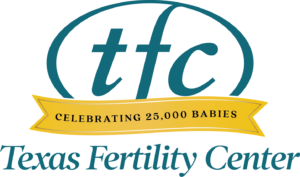
Uterine abnormalities can cause infertility or recurrent pregnancy losses
Uterine abnormalities can be either congenital (something you are born with), or they can develop over time. Such abnormalities can be causes of infertility, but effective treatment can make pregnancy possible.
Uterine abnormalities that are present from birth
Congenital abnormalities of the uterus and fallopian tubes that are present at birth are called Mullerian anomalies. These birth defects of the uterus result from abnormal development of the uterus, fallopian tubes or cervix.
During early fetal development, the uterus actually starts out as two separate, tube-like structures near the kidneys. Each portion migrates down into the pelvis and fuses with the other to become the uterus and fallopian tubes, as well as the tube structure that will eventually become the vagina. If this process does not happen correctly, many different possible shapes, called Mullerian anomalies, can result.
Common Mullerian anomalies
Septate uterus – The tube-like structures fuse in the middle to become a single uterus, but the interior wall fails to completely reabsorb. This leaves one uterus with a wall in the middle, dividing the uterus cavity into two. This defect can vary in size from a very small wall at just the top of the uterus, to one that comes all the way down to the cervix.
Bicornuate uterus – The tube-like structures fuse only at the bottom, leaving the two upper portions separate. This forms two smaller uteruses in close proximity to each other, often sharing a single cervix.
Uterine didelphys – The tube-like structures don’t fuse at all, resulting in two completely separate smaller uterine cavities and two cervices.
Unicornuate uterus – One tube-like structure does not develop at all, so only the side that functions is present, leaving a smaller uterus and single fallopian tube.
Each of these uterine abnormalities is associated with both infertility and recurrent pregnancy loss. Only a septate uterus can be surgically repaired to improve outcomes for higher pregnancy rates and lower miscarriage rates.
None of the other types of Mullerian anomalies should be surgically repaired, as the “fix” may be worse than the actual condition itself. However, our San Antonio fertility specialists treat each of these conditions in order to maximize the chance of a singleton live birth, as twin and multiple pregnancies can be extremely risky for these types of uterine birth defects.
Uterine abnormalities acquired over time
There are other uterine abnormalities that develop over time. These include uterine fibroids; uterine polyps; and uterine adhesions, or scarring inside the uterine cavity.
These abnormalities can sometimes cause symptoms such as painful or heavy periods, unexpected bleeding, pain with sex, and even frequent urination or constipation. Sometimes, there are no symptoms at all, and these abnormalities are found during a fertility evaluation for someone struggling to get pregnant. Special in-office imaging, such as a saline sonogram or hysterosalpingogram (HSG), can identify these abnormalities.
If you have been diagnosed with a uterine abnormality and are planning pregnancy, please contact our San Antonio fertility center. Dr. Erika Munch and Dr. Eric Han are expertly trained to diagnose and treat uterine abnormalities for patients trying to conceive and can get you promptly on the right path to pregnancy.



